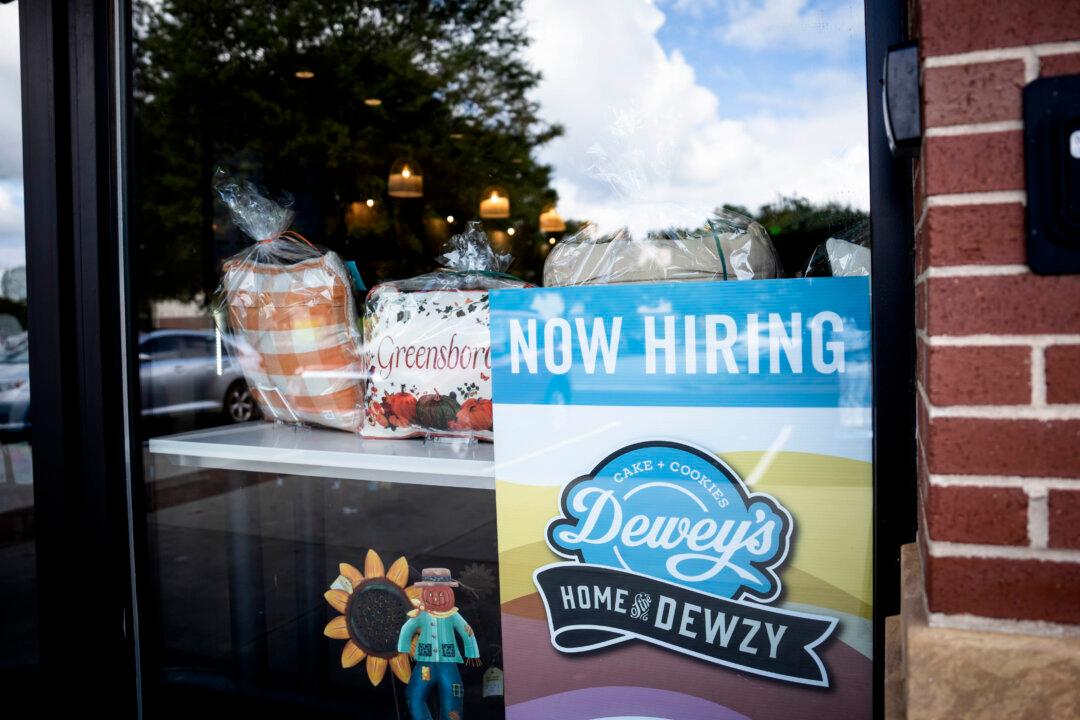The U.S. economy added 139,000 new jobs last month, surpassing economists’ expectations and indicating that the U.S. labor market remains in a robust position.
The median estimate suggested 130,000 new jobs and a 4.2 percent jobless rate, FactSet Insights reported ahead of the May employment figures.
Average hourly earnings rose by 0.4 percent monthly, higher than the consensus estimate. On a year-over-year basis, average hourly earnings were unchanged at a higher-than-expected 3.9 percent.
Shortly after the employment data were released, President Donald Trump touted the May jobs report.
The labor force participation rate dipped to 62.4 percent from 62.6 percent. Average weekly hours were also flat, at 34.3.
Health care led last month’s employment gains, with payrolls rising by 62,000 and above the 12-month average of 44,000.
Employment in leisure and hospitality surged by 48,000, followed by social assistance (16,000).
Federal government employment fell by 22,000 and is down by 59,000 since the beginning of the year. Manufacturing payrolls also slumped by 8,000.
The household portion of the nonfarm payrolls report, which removes duplication, revealed a sharp decline of 696,000 new jobs.
Full-time employment decreased by 623,000, while part-time jobs edged up by 33,000. The number of people working two or more jobs decreased for the second straight month, declining by 283,000.
In a sign that individuals who have been out of work for 27 weeks or more may be finding employment, the number of long-term unemployed fell by 218,000 to 1.5 million.
The divergence between U.S.- and foreign-born workers has been a key feature in the labor market over the past several years. Last month, both categories of workers shed jobs.
The number of employed native-born workers declined by 444,000, and the number of employed foreign-born workers fell by 224,000.
Market Reaction
Investors cheered the latest employment data before the opening bell.The leading U.S. stock market benchmark averages advanced by as much as 0.8 percent.
Yields on U.S. Treasury securities were also in the green. The benchmark 10-year Treasury yield firmed above 4.45 percent.
The U.S. dollar index, a measure of the greenback against a weighted basket of currencies, rose by about 0.3 percent. Still, the index is poised for a weekly loss of 0.3 percent and is down by nearly 9 percent this year.
“Overall, the labor market remains stable, and there’s no sign that the negative sentiment and uncertainty hovering over the market is having any real impact on jobs,” Jay Woods, the chief global strategist for Freedom Capital Markets, said.
Slow and Steady
A flurry of employment data this week sent mixed signals about the state of the U.S. labor market.Job vacancies, for example, unexpectedly increased in April. The Bureau of Labor Statistics’ Job Openings and Labor Turnover Survey reported on June 3 that the number of job openings increased by approximately 200,000 to a higher-than-expected 7.4 million in April.
Quits, a measure economists monitor to gauge workers’ confidence about the broader job market, fell by 150,000 to a four-month low of 3.19 million.
Private employers added fewer jobs than market watchers anticipated.
“After a strong start to the year, hiring is losing momentum,” Nela Richardson, the chief economist at ADP, said in the report.
Layoffs have slowed, but unemployment filings have edged up.
“Tariffs, funding cuts, consumer spending, and overall economic pessimism are putting intense pressure on companies’ workforces,” Andrew Challenger, the firm’s senior vice president, said.
Department of Labor numbers for the week ending May 31 revealed a modest uptick in first-time unemployment filings.
“Jobless claims continue to rise, but they are rising at a slow pace, so it’s a trend worth watching, but too soon to sound the alarm,” Chris Zaccarelli, the chief investment officer at Northlight Asset Management, said in a note emailed to The Epoch Times.






